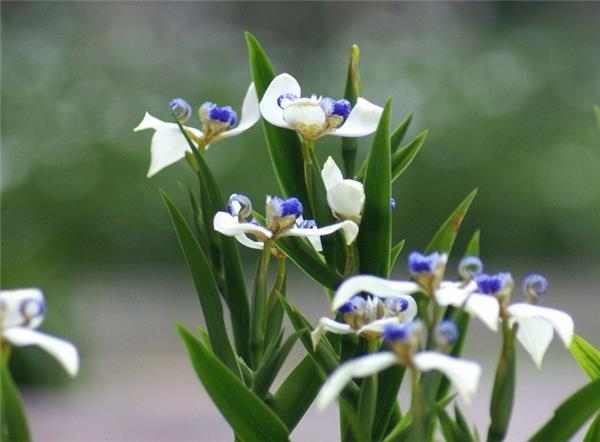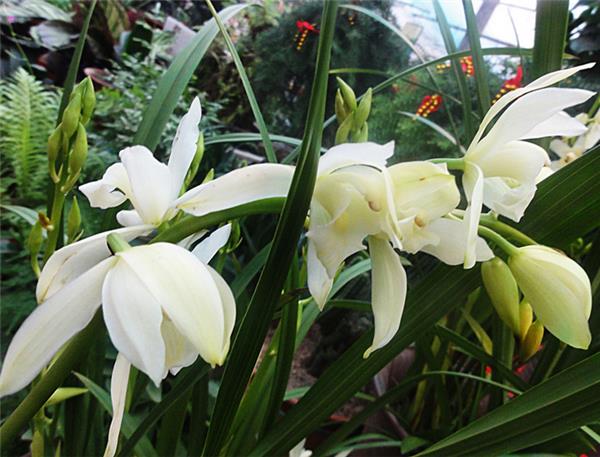Control methods of common orchid diseases and insect pests
Orchid grass is one of the favorite flowers and plants raised by flower friends, and it is also the one most prone to diseases. Here are some common prevention and control methods of orchid diseases and insect pests.

Control methods of common orchid diseases and insect pests
1. Red spider: it often occurs in places with strong light, dry exercise and high temperature. Rapid reproduction, insulting years can linger for 14 to 18 generations, the damage is serious, the leaves of the affected plants are yellow or necrotic patches. It completely lost its ornamental value, and some even died of the whole plant.
Prevention and control measures: inject exhaustive ventilation and water spray to increase humidity; if several pots are less available to use manual brushing; the quantity is more than 40% = catch dragonfly drunk, 80% dichlorvos or 40% omethoate 1000 times liquid spraying, the control effect is good.
2. Leaf miner: Diptera. Aristolochia mandshurica and Aristolochia mandshurica suffered the most. The larvae latent feed on the mesophyll under the leaf epidermis, destroy the leaf tissue and affect the ornamental, and the damaged parts are easy to produce black rot, which leads to the decay of the whole leaf and plant.
Control strategy: in the initial stage of larval damage, spray 1000 times of 40% omethoate, 80% dichlorvos or 25% imidophos, once every 7 days. Spray twice and three times in a row, the control effect is quite good.

3. Whitefly: the whitefly is small and powdery all over the body, and the species with thin cuticle of bluegrass leaves are vulnerable to it. Make the leaves withered and yellow. Brown rot is easy to occur in the wound, even the whole plant dies. Whitefly has strong fecundity and can form a large number in a short time. Due to the white waxy powder on the body, it is difficult to prevent and cure. Common species are: White whitefly, spiny whitefly, orange green whitefly, orange black whitefly.
Control measures: spraying 2.5% cyanogen chrysanthemum vinegar, 20% dimethoate 2000 times, or 40% dimethoate EC 800 times, 80% dichlorvos 800 times-1000 times, 50% malathion 800 times, the control effect is good.
4. Scale insects: Shield scale and pink scale are the most common. The occurrence period is from April to October, and it occurs occasionally in winter. Its fecundity is extremely strong. Many generations can occur in a year and generations overlap, especially from May to October.
Prevention and treatment: when a small amount of ① occurs, you can use a soft brush to remove it, then rinse it with water. When there is more ②, 1000 times of the emulsion can be sprayed during the peak incubation period. When spraying, both the front and back of the leaves should be sprayed, and the leaves should be sprayed 4 times in a row, each time with an interval of 5 Murray for 7 days, then it will be basically extinct.

5. Anthracnose: it is an important disease of bluegrass. At the initial stage of the disease, the leaves produced round, dark brown disease spots, and then gradually expanded with dark brown edges, gray-white center, and disease spots easily broken. When it occurs seriously, the disease spots are numerous and the leaves are withered and yellow.
Prevention and control measures: ① cut off the diseased leaves and remove the diseased body. Centralized burn; ② pay attention to ventilation and light transmission; ③ cultivate strong plants to reduce the incidence of disease and prevent overwatering, especially avoid direct spraying plants; ④ infected plants can be sprayed with 50% benzoate and 70% topiramine or 50% carbendazim 600x-800x liquid, once every 10 days or so, 3 times a 4 times, the control effect is quite good.
6. Leaf blight: the leaves of bluegrass were mainly affected by small reddish-brown spots at the initial stage, and then rapidly expanded into oval or round black-brown spots, with more disease spots, and the leaf tissue between the disease spots turned green and turned yellow and withered.
Prevention and cure method: ① removes diseased leaves and concentrated burning of diseased remains. ② should pay attention to ventilation and light transmission, prevent excessive watering, and avoid direct spraying of plants. ③ can be sprayed with 50% topiramate 600 mol 800 times solution. Once every 10 days or so, spray 3 Murray for 4 times.

7. White silk disease: one of the main diseases of Cymbidium, caused by fungi. It is easy to occur in the high temperature and rainy season, which often occurs in May and June, with the peak of the disease in July and August.
Prevention and treatment methods: ① timely removal of diseased leaves, diseased plants, diseased points, can be mixed with lime disinfection; before setting the plant, wet the basin soil with 1000 times solution of soil seedling dewatering agent. In the early stage of ②, 500 times of chlorothalonil can be used to spray leaves and roots.
Related
- Wuhan Hospital Iron Tree Blooming Result Was Instantly Frightened by the Gardener Master
- Which variety of camellia is the most fragrant and best? Which one do you like best?
- What is the small blue coat, the breeding methods and matters needing attention of the succulent plant
- Dormancy time and maintenance management of succulent plants during dormancy
- Minas succulent how to raise, Minas succulent plant pictures
- What are the varieties of winter succulent plants
- How to raise succulent plants in twelve rolls? let's take a look at some experience of breeding twelve rolls.
- Attention should be paid to water control for succulent plants during dormant period (winter and summer)
- Watering experience of twelve rolls of succulent plants
- Techniques for fertilizing succulent plants. An article will let you know how to fertilize succulent plants.



